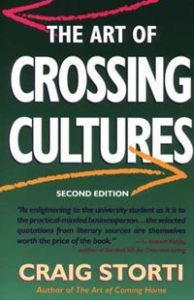For the next few weeks, we’ll explore three different theories related to Third Culture Kids (TCKs) and repatriation. Note that these are theories, not facts. As we will see, the theories all have their own merits, but they don’t always agree.
Click here for Part I
Part II
Last week we discussed Storti’s model, which describes three basic phases of adjustment after repatriation: the “expectation of the home culture,” a “cultural incident” and developing “culturally appropriate expectations.” Paul Pederson[i] expands Storti’s model by describing five stages of culture shock. (Most scholars call culture shock upon repatriation reverse culture shock, however the Pederson’s model still captures many of the nuances of the experience). According to Pederson, culture shock begins in the honeymoon phase, when a person has yet to experience culture shock, then a “cultural incident” causes disintegration or disorientation and confusion. During the reintegration stage, the individual begins to resolve the cultural dissonance (reminiscent of Storti’s “culturally appropriate expectations”). In the autonomy stage the person develops a greater awareness of herself and others, and finally reaches the interdependent stage, which consists of a new multicultural identity.

Let’s see how these stages might apply to Lisa’s (fictional) experience. This is the same story, with a few additions to fit the model.
Lisa, an American, Third Culture Kid, grows up in Egypt, Morocco and France. Her mother works for the American State Department. Like her mother, Lisa feels she represents the United States, and her mother often says, “You’re an ambassador as well!”
Lisa brings peanut butter and jelly sandwiches to school and wears Old Navy jeans on the weekends; she plays softball on the school team and friends joke about her American accent. Lisa represents the United States of America abroad.
Culture shock begins in the honeymoon phase, when a person has yet to experience culture shock.
Lisa can’t wait to return to the United States. Finally she won’t be the foreigner anymore! Her love of peanut butter, Old Navy and softball will be the norm, rather than the exception. No one will even notice her accent. Finally, Lisa will feel like she belongs—just as everyone fits in at home.
A “cultural incident” (much like Storti’s) causes disintegration or disorientation and confusion.
On the first day of school, Lisa meets her classmates. One girl says, “oh, you have such a cute accent!” Lisa lets it slide. Lisa has to fill out health forms, so she tells the nurse she is 170 centimeters tall and the nurse gives her a look. Lisa turns red, but lets it slide. After a short conversation, a boy says, “you’re kind of like a foreigner!” Lisa fights back tears and wants to go back to France.
During the reintegration stage, the individual begins to resolve the cultural dissonance (reminiscent of Storti’s “culturally appropriate expectations”).
Lisa learns to gage when her friends are interested in stories from her time abroad, and when she meets someone who doesn’t seem interested, she can usually engage them in a lively conversation about baseball.
In the autonomy stage the person develops a greater awareness of him or herself and others.
Lisa begins to understand that her international background does not make her any less American, but does make her different from some of her peers. Lisa realizes she has many friends from many different cliques, and begins to explore how she is similar and different to her peers. This process can be draining, but is important to Lisa.
Finally reaches the interdependent stage, which consists of a new multicultural identity.
As Lisa learns what to expect from her friends and teachers, she begins to feel connected to her school community. She understands, respects and even cherishes both her American heritage and international experiences and actively keeps connections to both worlds.
Next week we will explore W. E. Cross’s theory of Nigrescence.
[i] Pederson, P. (1995). The five stages of culture shock: Critical incidents around the world. Westport, CT: Greenwood Press.



 Posted by findingschools
Posted by findingschools 
 However when a “cultural incident” disproves their beliefs, TCKs react in anger, fear or embarrassment, which causes withdrawal and/or analysis of the situation.
However when a “cultural incident” disproves their beliefs, TCKs react in anger, fear or embarrassment, which causes withdrawal and/or analysis of the situation.